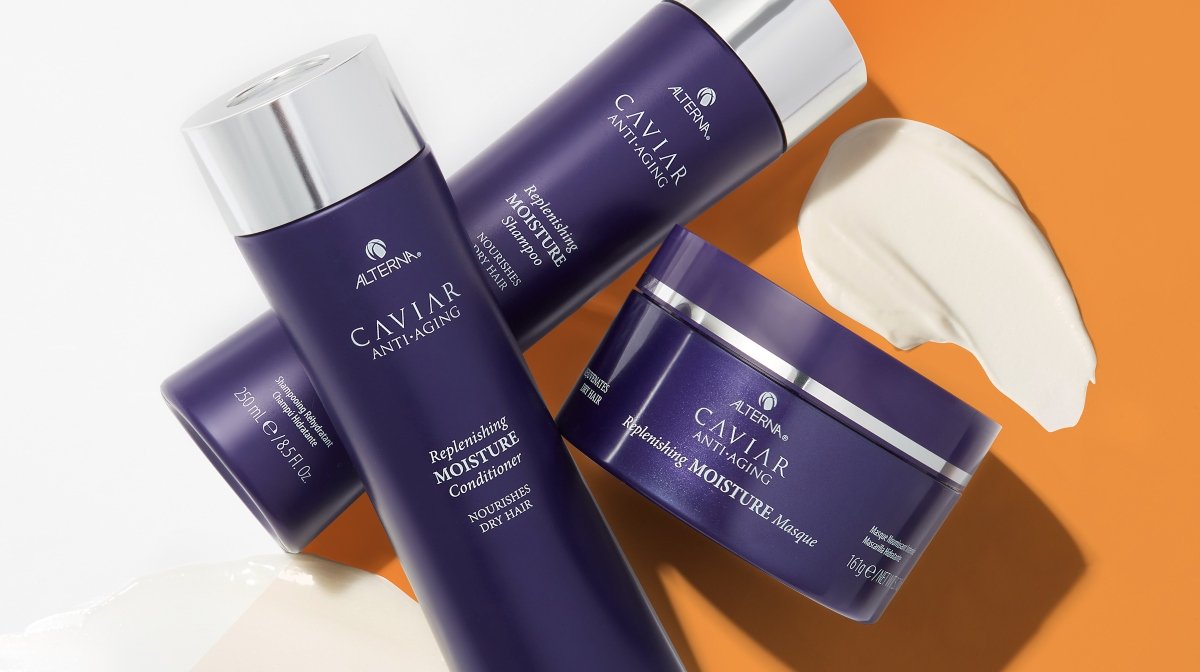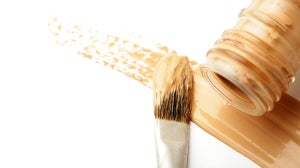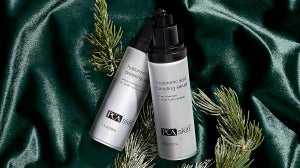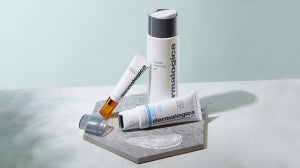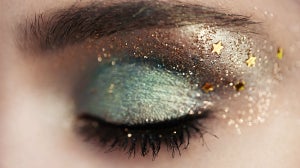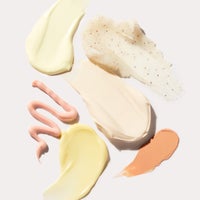
Just like the skin, our hair is susceptible to daily damage from various aggressors and actions we take. From breakage to brittleness, hair damage can present itself in many ways, leaving us with lackluster locks and an unwanted dullened shine.
However, there are many products and precautionary steps you can take to save your strands and revitalize damaged lengths. Take a look at our top treatment picks to help repair damaged hair and kickstart your journey to healthy, happy tresses.
Table of Contents:
- Understanding Hair Damage
- Assessing Your Hair's Condition
- Essential Tips for Daily Hair Care
- Hair Treatments for Damaged Hair
- Preventing Future Hair Damage
Understanding Hair Damage
Hair damage occurs when a cuticle (the outermost part of the fiber) cracks and lifts, resulting in a weaker look and feel. This can be caused by a variety of factors, and even ‘virgin’ hair can experience the following signs.
Identifying which type of damage your hair has can help you find the right products to protect and replenish, preventing future damage.
Types of Hair Damage to Look Out For
- Breakage and Snapping: Hair that is prone to easily breaking off and falling out.
- Split Ends: Frayed, brittle and dry ends that make the hair appear thinner.
- Frizziness and Flyaways: Characterized by stray hairs that stick up or away from the rest of the lengths.
- Hair Loss: An excess or unusual amount of hair falling out.
- Dull, Dry Hair: May feel rough and look lifeless.
Causes of Hair Damage
Hair damage can be caused by numerous factors, some of which we have little control over. Below are some common examples:
- Mechanical Damage: Caused by brushing and tying the hair too tightly, mechanical damage weakens the tresses over time, leading to breakage and frizziness.
- Heat Styling: A common culprit for causing split ends, breakage and even singeing in some cases, as thermal tools wear down the cuticle.
- Color and Chemical Treatments: Color and retexturizing treatments can cause significant damage to the hair if applied too frequently, deteriorating the protein structure to result in a finer and more fragile feel.
- Environmental Causes: Pollution, extreme weather and humidity all contribute to dry, dull and damaged hair.
Assessing Your Hair's Condition
To determine what type of damage you have, evaluate these visual cues and textural tests you can carry out at home.
Self-Assessment Tips
Firstly, take an inch-wide section of hair and gently but firmly pull it down to the ends. Run your fingers down this piece of hair as it's taut; if you feel an uneven surface that is not smooth or if the hair begins to snap, you may have split ends and breakage.
If your hair texture has changed from smooth to straw-like, this may be an example of heat-damaged or excessively color-treated lengths.
Brittle hair that is easily tangled or looks dull and flat is a telltale sign of a lack of moisture, meaning your hair could be dry.
Consulting with Professionals
If you are concerned about the condition of your hair, you can consult a professional stylist. They can advise more in-depth and tailored treatments to cater to your needs, whether it is a more intensive product or regular cuts to protect from further damage.
Essential Tips for Daily Hair Care
Back to Basics
Begin with the fundamentals, an effective cleansing and conditioning routine helps to remove build-up that can congest the fibers and add essential moisture, alongside preparing the hair for subsequent treatments. Look out for detox shampoos and invest in a good scalp massager for gentle exfoliation. If you have color-treated tresses, consider shampoo and conditioners developed specifically to nurture your hair type and preserve your tone.
Turn Down the Heat
A simple change you can implement is to turn down the heat on your tools. Many of us are tempted to turn it up to the highest setting for speed of styling, but your hair can see the same results at around 250°-300°F and thicker hair at 300°-400°F. Don’t forget to generously mist or coat the hair in a heat protectant prior to styling.
Go Heatless
Can’t go without a bouncy blow-out? Trade the tongs for a heatless curler, designed to style the hair and grant mermaid-worthy waves while you sleep. Made from soft satin, the curler protects from flyaways and friction, in turn preventing excess snapping and snagging.
Hair Treatments for Damaged Hair
Take a look at our editor’s top picks for damaged hair treatment below.
Hair Treatments for Colored Hair
If you are going to dye your hair, consider moisture-rich formulas that help defend from brittleness and snapping, and only dye the roots if you can. To nourish, choose shampoos, conditioners and masks formulated for colored hair like the Christophe Robin Color Shield Shampoo and the VIRTUE ColorKick Illuminating Mask.
Hair Treatments for Dull, Dry Hair
Lengths lacking hydration will benefit from a weekly hair mask, as this deposits long-lasting, lightweight moisture that visibly plumps and thickens strands. Look out for ingredients like argan oil, shea butter and coconut oil for hair-quenching silkiness. If your hair is limp and lifeless, explore volumizing and root-stimulating products to bring back body and bounce like the Grow Gorgeous Volume Collection.
Hair Treatments for Split Ends and Breakage
Split ends and breakage can accumulate from various stressors, as this occurs when the cuticle is worn down and becomes fragile. One way to reinforce your fibers is to add bond-building formulas to your usual routine. Offering this technology in all its products is Olaplex, a brand that has paved the way in strengthening weakened strands. Discover its advanced systems that help to fuse fibers back together by fortifying the bonds.
Scheduling regular cuts and trims can also reduce the number of noticeable split ends and encourage healthy re-growth, supporting the illusion of fuller-looking lengths.
Hair Treatments for Frizzy Hair
There are multiple methods to minimize the appearance of flyaways, and most of them are relatively easy to implement. While you might be tempted to flat iron or cover your hair in serum to straighten out the strays, the best way to reduce frizz is to protect and prevent. Find a heat protectant spray or cream to use before styling or spending time in the sun, as this will help defend against flyaways caused by humidity or thermal tools.
A sleep-in hair wrap like the SILKE Hair Wrap ensures a smooth style when you wake, similar to a satin or silk pillowcase which reduces friction and tangles caused by cotton.
Preventing Future Hair Damage
In conjunction with applying these hair-repairing formulas, it is important to take steps that will prevent the damage cycle from recurring. Here are some top tips to protect your lengths:
- Ensure you are gentle on your lengths when brushing and styling, not forcing the brush through a tangle, but separating and working in sections. Swap your old brush for a new, hair-type-specific one to minimize breakage when detangling.
Related Article: The Ultimate Guide to Choosing the Perfect Hairbrush for Your Hair Type
- Color only if necessary, and no more than once every four to six weeks to reduce the stress on your strands.
- Prioritize your hair’s health just like you would your skin. You wouldn’t leave the house on a hot day without the SPF, so why not protect your hair in the same way? Find a heat protectant that works well for your hair type.
Repairing damaged hair takes patience and consistent care, but with the right formulas and approach, you can see transformative results that will take the tresses from weak to well-tended.
Shop all SkinStore’s damaged hair repair treatments here.

Related Articles

